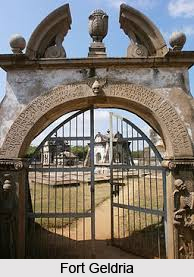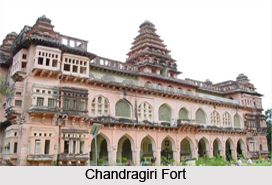 Pulicat became an important centre for its early rulers and the colonial powers due to its role as a seaport in one of the few natural harbors in the Coromondal coast of India. It is located in Tamil Nadu right at the mouth of the Pulicat Lake, 40 km north of Chennai.
Pulicat became an important centre for its early rulers and the colonial powers due to its role as a seaport in one of the few natural harbors in the Coromondal coast of India. It is located in Tamil Nadu right at the mouth of the Pulicat Lake, 40 km north of Chennai.
It is the first Dutch settlement in India, the headquarters of the Dutch East India Company in India from 1616 to 1690 and 1782 to 1825.
The history of Pulicat is traced to eight periods of Indian kings and foreign colonialists between the third century BC and the present period. It was the reason for many wars as Telugu, Tamil, Arab, Portuguese, Dutch and British rulers fought to acquire the profits of the revenue from its rich ports.
The town suffered from the usual seesaw of European political fortunes. In 1781 it was seized by the British, only to be restored to the Dutch four years later. It surrendered again in 1795. In 1818 Pulicat was handed back in accordance with the Convention of Allied Powers of 1814, but it was finally ceded to Britain in 1824. After independence, the fort became a part of Madras state of India, which was later renamed as Tamil Nadu, in 1968.
The chief monumental constructions in the place are credited to the Dutch. They went on to build the Fort Geldaria and the Dutch cemetery which are two of the chief places of interest when visiting Pulicat. There is also a Dutch Church here, which has withered away in spite of renovation.
Fort Geldria
 It was in 1606 when the Dutch landed in India for the first time requesting water from the local people of the karimanal village where they landed. The local Muslim people gave them food and offered their hospitality. This led to the establishment of a trade relationship whereby the local people would procure and supply local merchandise to the Dutch for trade in the East India Company. The Dutch establishment here met with early stiff resistance from the Portuguese, including several attacks on the harbor. In 1611, Venkatatapati turned against the Portuguese and the Jesuits were ordered to leave Chandragiri and the Dutch were permitted to build a fort at Pulicat.It was during the reign of Queen Eraivi, wife of King Venkata II who ruled Prelaya Kaveri that the Dutch East India Company got the permission to build the fort. They built the Fort Geldria in 1609 at Pulicat as a defense from local Kings and the Portuguese .From here they monopolized the lucrative textiles trade with the East India Company and other countries in the region. The fort was occupied by the British in 1825 and they continued to own it till the time of India`s independence.
It was in 1606 when the Dutch landed in India for the first time requesting water from the local people of the karimanal village where they landed. The local Muslim people gave them food and offered their hospitality. This led to the establishment of a trade relationship whereby the local people would procure and supply local merchandise to the Dutch for trade in the East India Company. The Dutch establishment here met with early stiff resistance from the Portuguese, including several attacks on the harbor. In 1611, Venkatatapati turned against the Portuguese and the Jesuits were ordered to leave Chandragiri and the Dutch were permitted to build a fort at Pulicat.It was during the reign of Queen Eraivi, wife of King Venkata II who ruled Prelaya Kaveri that the Dutch East India Company got the permission to build the fort. They built the Fort Geldria in 1609 at Pulicat as a defense from local Kings and the Portuguese .From here they monopolized the lucrative textiles trade with the East India Company and other countries in the region. The fort was occupied by the British in 1825 and they continued to own it till the time of India`s independence.
Old Dutch Cemetery
The Old Dutch Cemetery is probably the most interesting of its kind in India. Many of the tombstones are over 400 years old. One tomb carries a representation of the original Dutch fort and others, Dutch coats of arms, so well executed that it has been suggested that they were sent from Holland. They owe their preservation to the work of Sir Charles Trevelyan, who saved many from decay.
The cemetery is entered via a quaint Romanesque lynch gate bearing the date 1656. In front of each of the two gateposts stands a sculpted stone skeleton, almost life size. One carries an hour glass on its head and the other a skull on a column. It is alleged that the former holds an eggshell and depicts a Dutch governor who, during a terrible famine, doled out eggshells of rice to the starving poor and made a fortune from their sufferings. His memory was so execrated that every passer-by used to spit at the effigy and a railing was therefore placed around it for protection. An old church and sundial adjoin the cemetery. The cemetery is now looked after by the Archaeological society of India.
The town of Pulicat has seen a great many wars and contentions due to its strategic location. Among the various powers that ruled over it at one time or another, was the Dutch who managed to establish their stronghold and leave the marks of their occupation till it finally fell to the British and then under Indian administration.



















